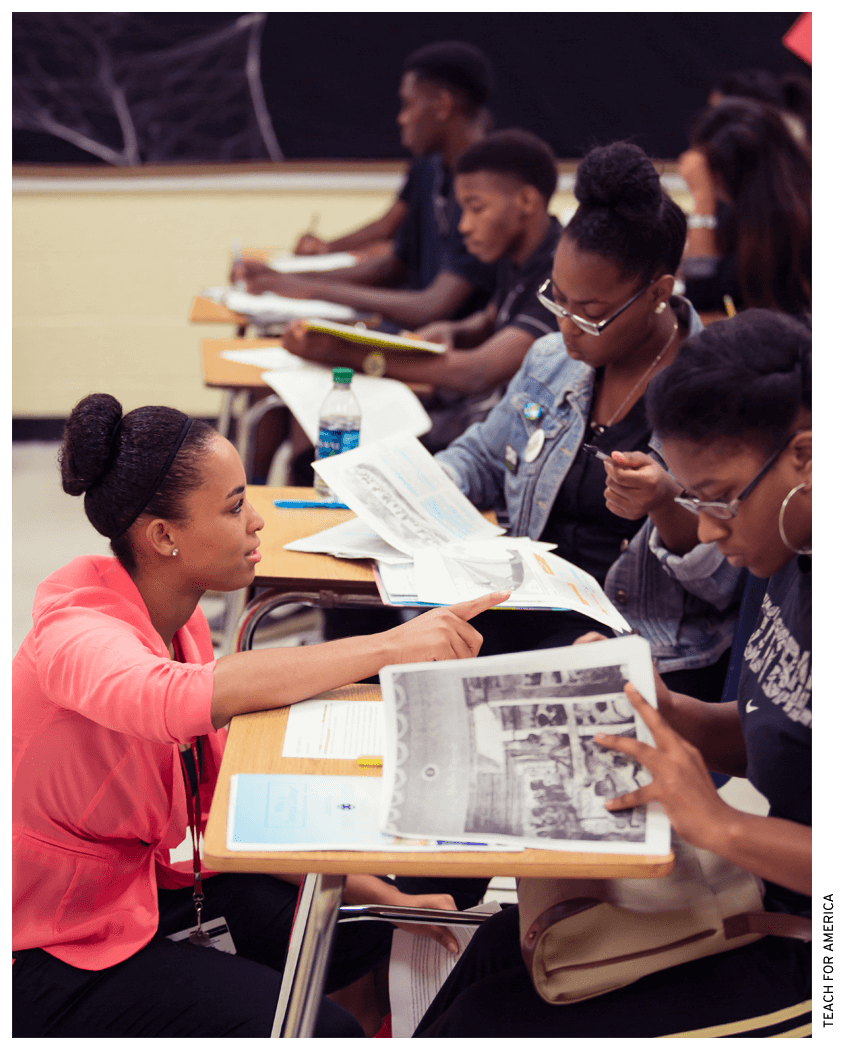
“Lead a life of impact . . . change starts with you.”
These are the pitches to aspiring corps members of Teach for America, the prominent alternate-route teacher-preparation program that trains promising college graduates to lead classrooms in high-need schools throughout the United States. And since its inception in 1990, many alumni of Teach for America, or TFA, have heeded the organization’s call to action. Former TFA teachers are ubiquitous at all levels of education policy and practice nationwide, from leading state departments of education to running for local office in hundreds of jurisdictions, as well as founding schools, charter networks, education startups, and consultancies dedicated to educational improvement and reform.
The organization also has attracted a backlash as its alumni’s influence and footprint have grown, with critics worrying publicly that TFA represents a specific and potentially suspect point of view on how to help schools improve. But does the experience of teaching in low-income schools through TFA affect individuals’ views on education policy and reform? And if so, how?
We surveyed TFA applicants for the 2007–15 cohorts to find out. Our survey targeted the set of applicants who had advanced to the competitive program’s final round of admissions, whom we separated into two groups based on their final scores during the selection process: individuals who scored just above the cutoff point used to admit candidates and participated in the program, and those who just missed the cutoff, were not admitted, and did not participate in TFA. The idea is that since candidates on either side of the admissions cutoff are likely to hold similar incoming beliefs, this approach allows for a rigorous, non-biased estimation of the impact of TFA participation itself. We then compared each group’s responses on a variety of questions regarding inequity, the teaching profession, and strategies for educational improvement. The differences were notable.
TFA participants are more likely to believe larger societal inequities perpetuate income-based differences in educational outcomes and favor investments in elevating the prestige of the teaching profession, early childhood education, and school-based wraparound services to address them. However, they are no more likely than non-participants to believe that certain politically charged policy levers—including school-choice policies, Common Core standards, teacher merit pay, and teachers unions—can effectively reduce inequity. On the whole, they believe it is possible to provide all children with access to a high-quality education, and that part of the solution is within the grasp of effective teachers. On average, relative to non-participants, the corps of TFA teachers and alumni with classroom experience in some of the most struggling schools in the country appear to be more optimistic that the challenge of educational inequity can be overcome—though not necessarily along the lines that either reformers or critics might have predicted.
Preparing to lead in the classroom—and beyond
Since its launch in 1990, Teach for America has fielded more than 680,000 applications and trained 68,000 teachers, who have taught more than 10 million American schoolchildren. This national-service program launched with a two-pronged theory of change: in the short term, TFA teachers are to effect positive change in the classroom during their two years of service; in the longer term, TFA strives to have a systemic impact by influencing the values and future careers of those who participate.
The program differs from other teacher-preparation providers in its selectivity, duration, and organizational mission. TFA recruits primarily high-achieving college seniors to serve as teachers for two years in low-income schools. Applicants undergo a rigorous selection process, with an acceptance rate of roughly 12 percent, currently comprising two rounds: an online application and a daylong in-person interview. Our analysis includes only applicants who advance to the interview stage. Per TFA’s selection criteria, these are applicants with a strong academic track record, demonstrated leadership skills, and a commitment to service.
Once accepted, TFA participants are assigned to one of roughly 50 regions nationwide; their subjects and grade levels vary. After summer training, TFA teachers lead classrooms in high-need schools. In the average TFA placement school during our study years, 80 percent of students were eligible for free or reduced-price lunch and 90 percent of students identified as racial or ethnic minorities. Participants receive ongoing training and support from both the organization and local higher-education institutions during their two-year commitment.
Such alternative hands-on training programs, which quickly place teachers in the classroom, are in contrast to traditional programs, in which years of college or graduate-school coursework culminate in a classroom teaching experience. The “alternative” approaches have grown in popularity and now account for 30 percent of the 26,000 teacher-preparation programs in the United States, such as those run by The New Teacher Project, the YES Prep charter network, and the Relay Graduate School of Education. While the annual enrollment for each of these programs is not publicly available, our back-of-the-envelope calculations suggest there are collectively at least as many alumni of these TFA-like programs as there are alumni of TFA itself, if not more.
However, teaching through TFA may be a different experience than teaching through other alternative pathways, in part because of its robust alumni network and explicit goal of influencing education from both inside and outside the classroom. A spinoff organization, Leadership for Educational Equity, encourages and supports alumni looking to run for office or gain decisionmaking power in their communities through board appointments or other public-service roles, for example. In sum, TFA alumni are supported with alumni programming and networks that aim to position them to influence politics and policy through various leadership roles: in classrooms and schools, in state legislatures and departments of education, in startups and charter networks, and in unions (see “Alumni With Influence”). Our study is the first large-scale empirical investigation of how participation shapes alumni views on education policy.
Data and Methods
To assess these attitudes, we asked applicants who advanced to the final stage of the TFA admissions process between 2007 and 2013 to take part in an online survey, which launched in 2015. All of the TFA participants within these application cycles would have finished their TFA assignment at the time of the study. Of that group of 91,752 unique individuals, 27 percent started the survey and 21 percent completed it, yielding complete responses from 19,332 people.
The survey contained a wide range of questions on educational inequity and reform. In particular, we asked individuals to: share their beliefs on why there are income-based differences in educational outcomes; assess the promise of politically charged educational initiatives, including charter schools, vouchers, preschool, standardized testing, and teachers unions; and share their views on the extent to which we could reasonably expect teachers to help students improve under challenging circumstances. For example, survey participants were asked to rate their agreement on a scale of 1 to 5 with statements like, “In the U.S. today, students from low-income backgrounds have the same educational opportunities as students from high-income backgrounds.”
We then link those responses with TFA administrative data, including demographic information and scores they were assigned at the end of the selection process. Critically, a final-stage applicant’s chances of being offered a spot in the program depend heavily on whether his or her selection score is above a specific numerical cutoff that varies from year to year and is known to neither applicants nor the program staff. The vast majority of those with a score above that cutoff receive an offer, while only a fraction of those scoring below it do. As a result, the probability that an applicant ends up teaching through TFA also jumps sharply at that cutoff: those who score just above the admissions cutoff are 30 percentage points more likely to participate in TFA than those who score just below (see Figure 1).
It is this feature of the selection process that makes it possible for us to estimate the causal effect of TFA participation on the education policy preferences of applicants. In particular, we can compare the attitudes of applicants who scored just above the selection cutoff with those who scored just below it. When making this comparison, we take into account that not everyone scoring above the cutoff actually taught with TFA, while some scoring below the cutoff did. Because the actual difference in participation rates across the cutoff was 30 percentage points, this amounts to multiplying the differences between the two groups of applicants by a factor of roughly three.
Results
Overall, we find that TFA participants are more likely than comparable non-participants to believe that societal issues, not differences in the actions or values of students from low-income backgrounds, exacerbate income-based differences in academic achievement (see Figure 2). Relative to non-participants, TFA participants are about 10 percentage points more likely to disagree with the statements that “poor families do not value education as much as richer families”; that “poor students have low motivation or will to learn”; and that “the amount a student can learn is primarily related to the student’s family background.” Rather, TFA participants attribute income-based differences in academic achievement to larger societal inequities; for example, they were 8.5 percentage points more likely to agree that “systemic injustices perpetuate inequity throughout society.” Further, we find that relative to similar non-participants, TFA participants are more likely to believe in the potential of teachers to engender positive change and are more optimistic that the income-based educational opportunity gap is a solvable problem.
With respect to current policies designed to reduce educational inequities, we find TFA participation does not change individuals’ views on several highly politicized reforms. For example, we observe no difference between participants and non-participants in terms of support for unions, Common Core curriculum standards, performance pay for teachers, and allocating school funding based on student need (see Figure 3). However, an important exception is that TFA participation appears to decrease support for school choice. TFA participants are 12 percentage points less likely to support the “expansion of high-quality charter schools” and 11 percentage points less likely to support vouchers to allow low-income children to attend private schools, compared to similar non-participants.
Interestingly, TFA participants are less critical of standardized testing than non-participants: though a majority of both groups agree “we should reduce dependence on standardized testing,” participants are 8 percentage points less likely to agree with the statement than non-participants. In addition, we find evidence that TFA increases optimism about teachers’ ability to foster and support student learning, regardless of student background (see Figure 4). Specifically, TFA participants are more likely to express confidence in students’ and teachers’ potential: they are 8 percentage points more likely to agree that student intelligence is “capable of changing a great deal”; 8 percentage points more likely to agree that “if teachers try really hard they can get through to even the most difficult or unmotivated students”; and 7 percentage points less likely to agree that “in poor communities, there really is very little a teacher can do to ensure that most of his/her students achieve at a high level.”
These findings are at odds with what we might expect to observe if participating in TFA left teachers feeling jaded, and suggest that participating in TFA increases optimism about the role of teachers in reducing income-based differences in academic achievement. Consistent with this view, TFA participants are 11 percentage points more likely to agree that “it is possible for all children in the U.S. to have the opportunity to attain an excellent education” and 6 percentage points more likely to support policies that elevate the prestige of the teaching profession. They also are more likely to support investments in wraparound services. Specifically, TFA participants are 7 percentage points more likely to support the broadening and improving of wraparound services, such as counseling and nutrition support.
Are these opinions really a function of teaching through TFA, or do they result from merely being admitted to the program? We further analyze our data in order to isolate the effect of the TFA teaching experience itself on alumni views.
First, we use the same cutoff-based research design to study the effects of being admitted to TFA, regardless of whether those who were admitted actually participated. If it is TFA participation, rather than admission, that causes shifts in participants’ views, we would expect this analysis to reveal smaller effects across the board. That is exactly what we find. Second, we focus only on applicants who were admitted to TFA and directly compare the views of those who did and did not participate. In making these comparisons, we adjust for observable differences in the demographic and educational backgrounds of individuals in the two groups, including their age, gender, college grade-point average, socioeconomic status, and religiosity. We detect statistically significant differences in the views of participants and non-participants across 15 of our 19 outcomes that are broadly consistent with the differences we documented above when we compared applicants who were barely admitted to those who were barely rejected. On the whole, this suggests that experience in the classroom through TFA, not just admission, shapes individuals’ views on education.
Conclusion
To our knowledge, our study is the first to examine how the experience of teaching through TFA in underserved communities shapes individuals’ views on educational inequity and reform. Because TFA teachers work in exactly the type of schools where educational disparities between low- and high-income children are most prominent, these teachers hold important perspectives on what causes, and can close, inequality in academic achievement.
In a separate analysis, our survey data also reveal how teaching through TFA affects participants’ understanding of economic fairness. We find that TFA teachers, who all have the social and economic advantages of being high-achieving college-educated adults, are more able to see through the lens of the disadvantaged as a result of their TFA experience. They take on attitudes that are closer to those of the economic “have-nots” in the United States regarding a perceived lack of fairness of the social and political status quo, and tend to maintain these attitudes over time.
After nearly three decades, the impacts of this national civilian-service program’s focus on education are far-reaching, with alumni leading state education departments in Massachusetts, Tennessee, and Rhode Island; founding prominent charter school networks like the Knowledge Is Power Program (KIPP), IDEA Public Schools, and YES Prep Public Schools; and working to develop education and other policy as elected officials in states like Colorado and Nebraska. These alumni hardly share identical points of view. Our research makes clear, however, that the kinds of experiences they had with TFA do influence beliefs about inequity and the tools by which to advance change.
The next step is to examine whether these attitudinal and belief shifts translate to behavioral changes, such as being more likely to vote and be active in civic life. It remains to be seen whether the perception that there is greater social injustice translates to greater activism on a broader scale, as well as efforts to build a sturdier economic and social ladder for disadvantaged individuals to climb.
Katharine M. Conn is senior research scientist at the Consortium for Policy Research in Education at Columbia University; Virginia S. Lovison is a doctoral student at the Harvard Graduate School of Education; and Cecilia Hyunjung Mo is an assistant professor of political science and public policy at University of California, Berkeley.
This article appeared in the Winter 2020 issue of Education Next. Suggested citation format:
Conn, K.M., Lovison, V.S., Mo, C.H. (2020). How Teach for America Affects Beliefs About Education: Connecting Classroom Experience To Opinions on Education Reform. Education Next, 20(1), 58-66.


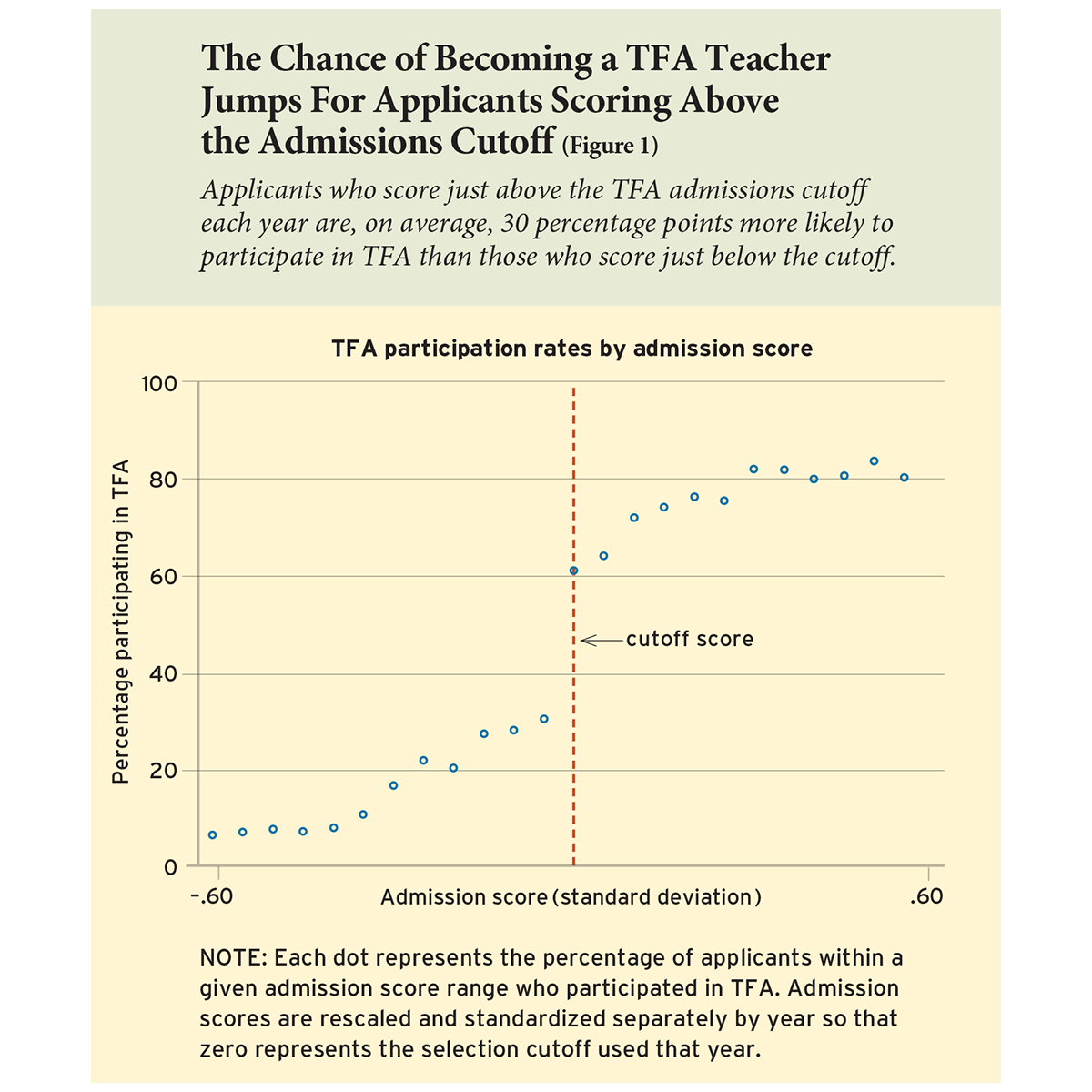
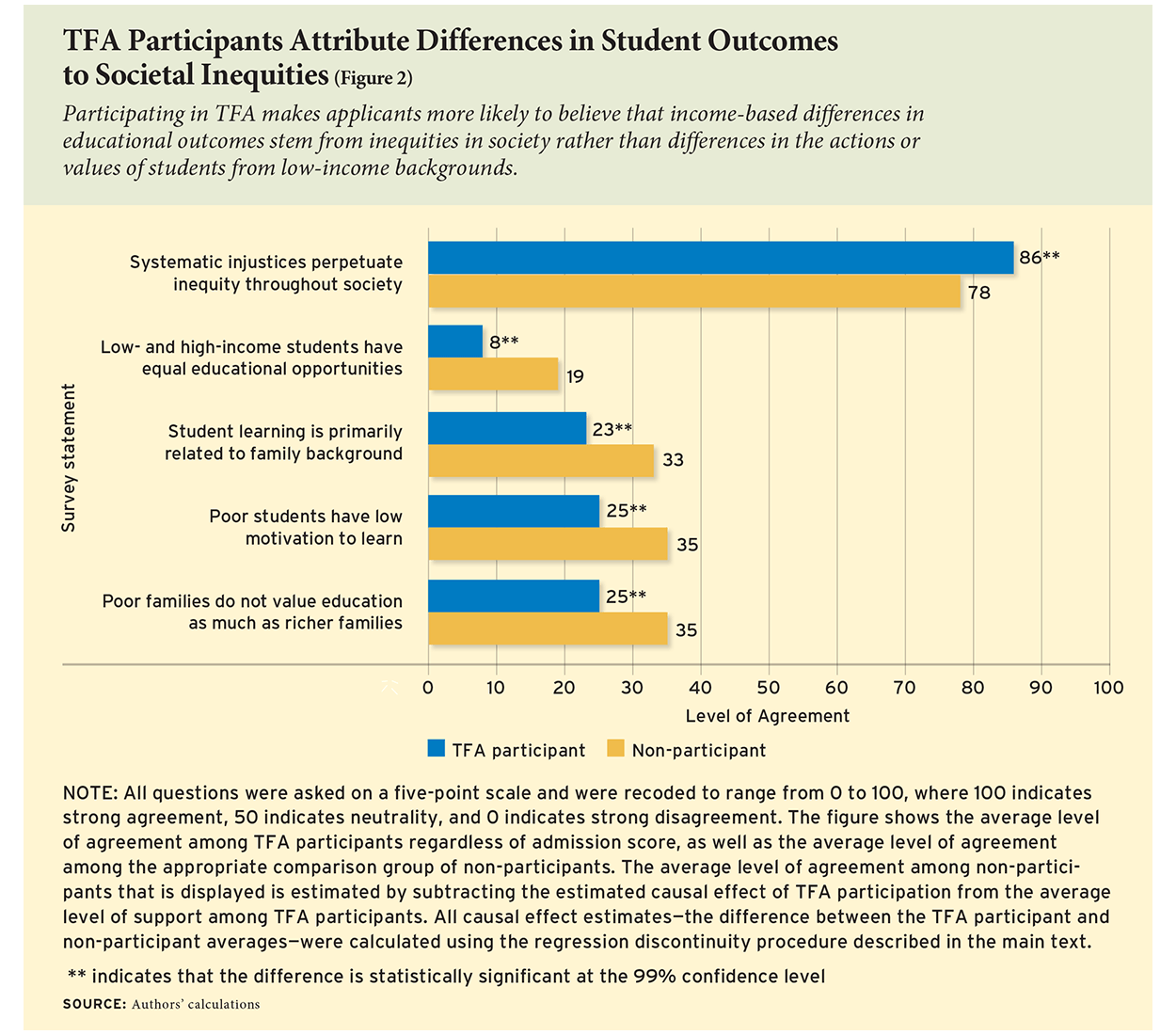
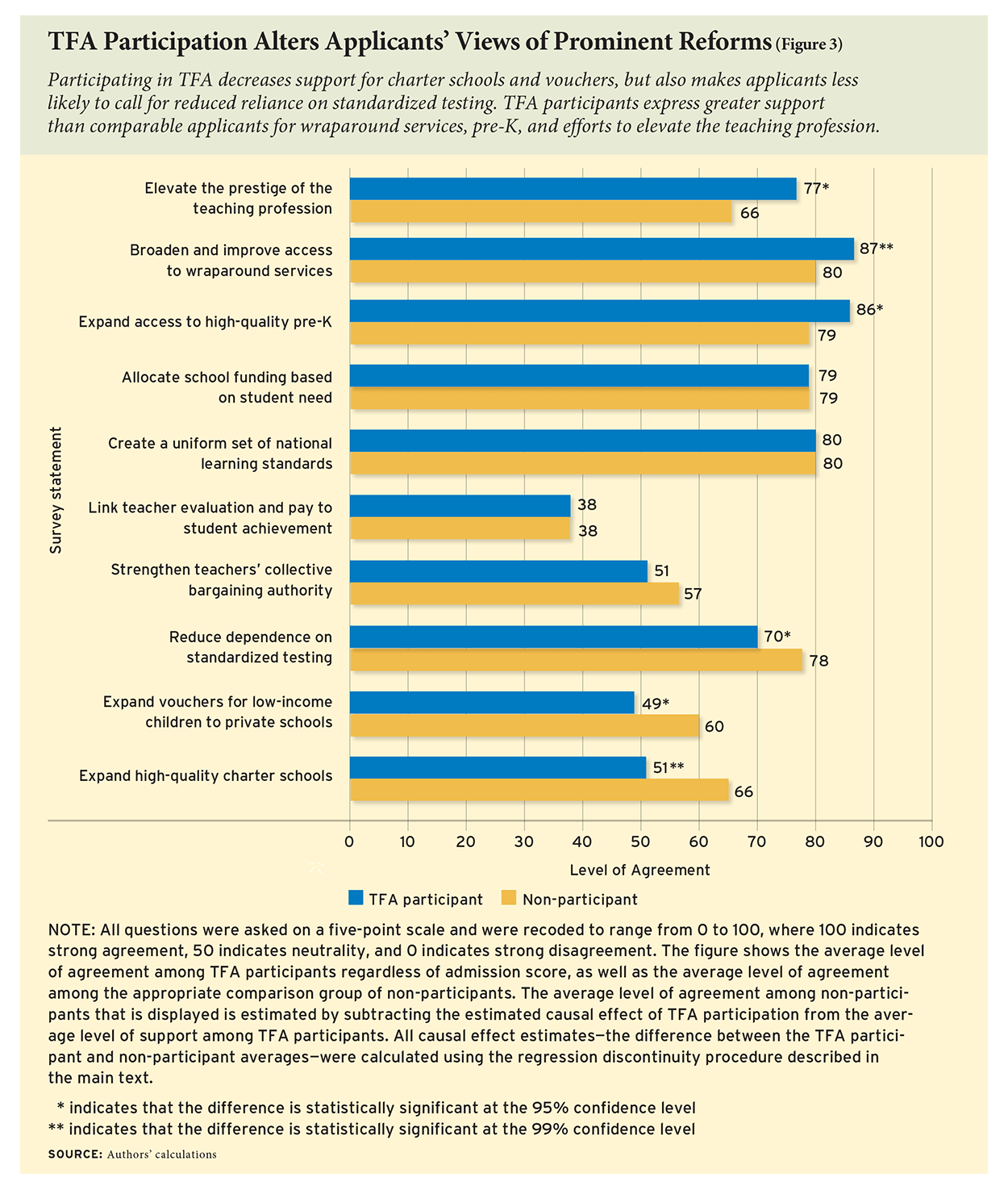
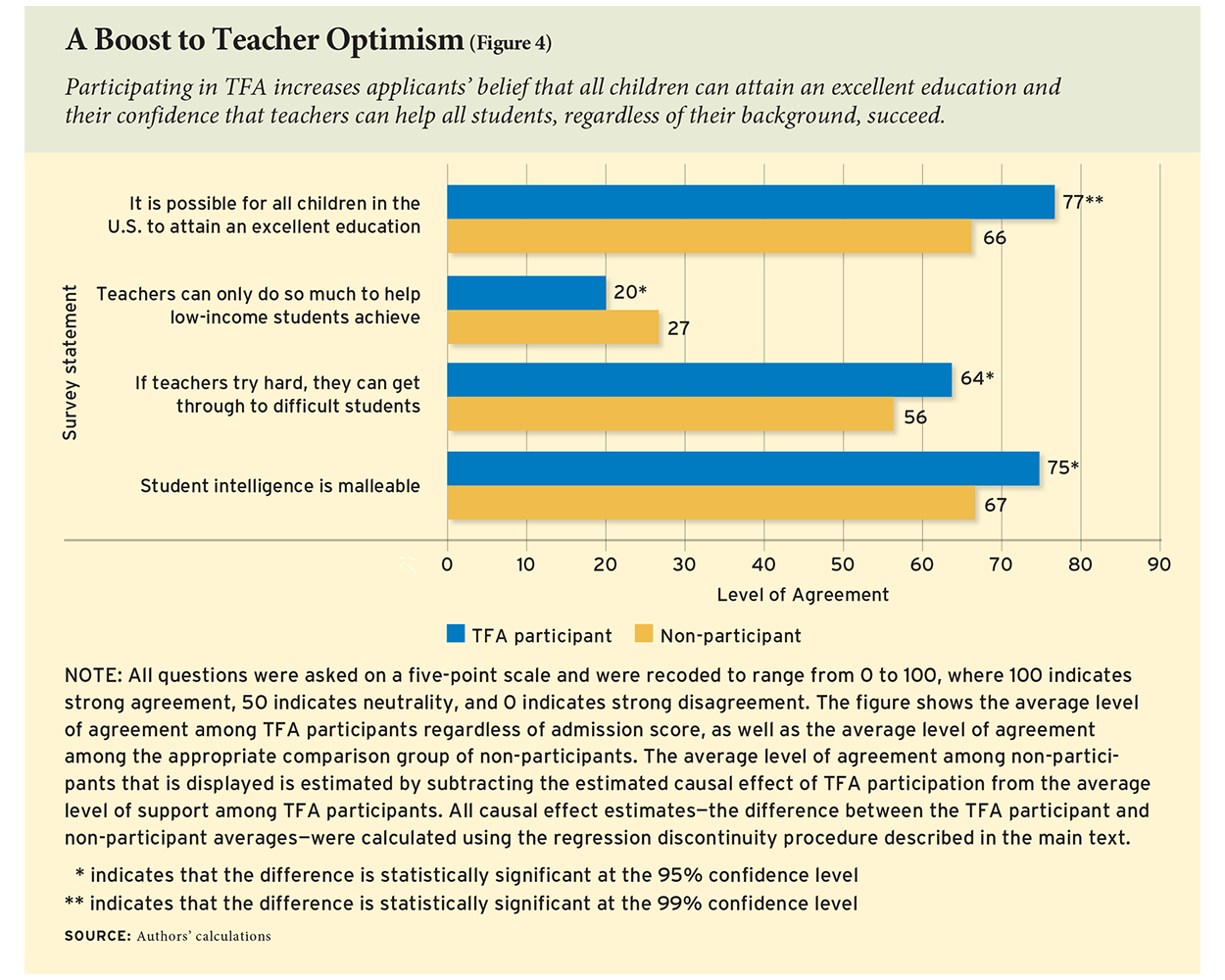
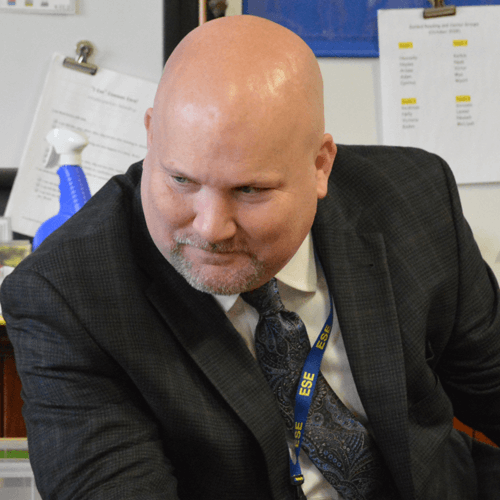 Jeff Riley, Class of 1993
Jeff Riley, Class of 1993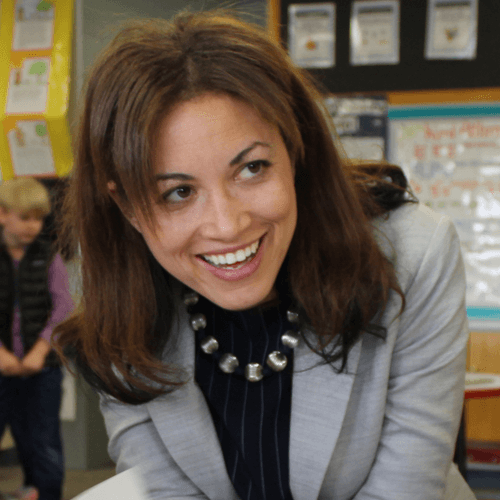 Penny Schwinn, Class of 2004
Penny Schwinn, Class of 2004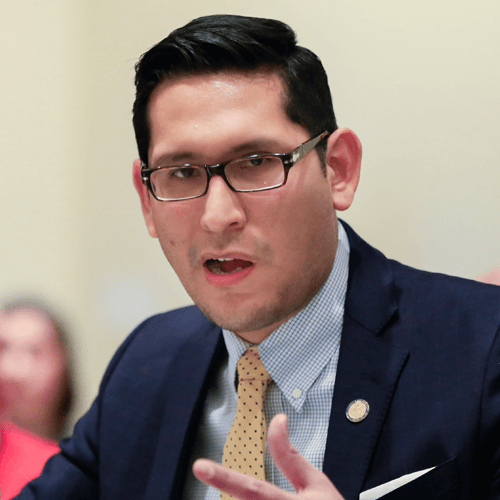 Tony Vargas, Class of 2007
Tony Vargas, Class of 2007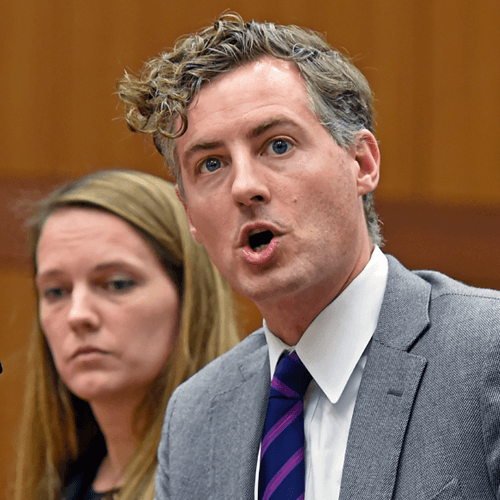 John White, Class of 1999
John White, Class of 1999 Brittany Packnett, Class of 2007
Brittany Packnett, Class of 2007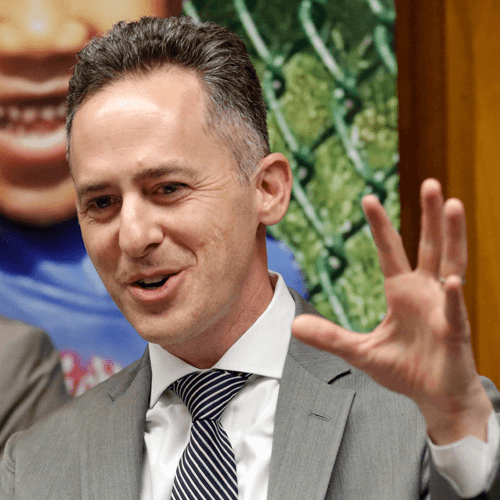 Jason Kamras, Class of 1996
Jason Kamras, Class of 1996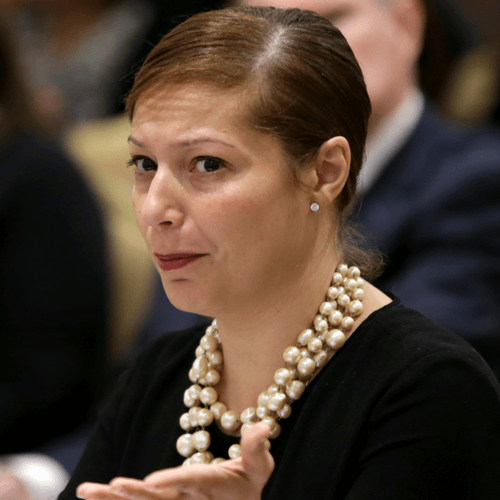 Angelica Infante-Green, Class of 1994 Former superintendent of instruction in New York State.
Angelica Infante-Green, Class of 1994 Former superintendent of instruction in New York State.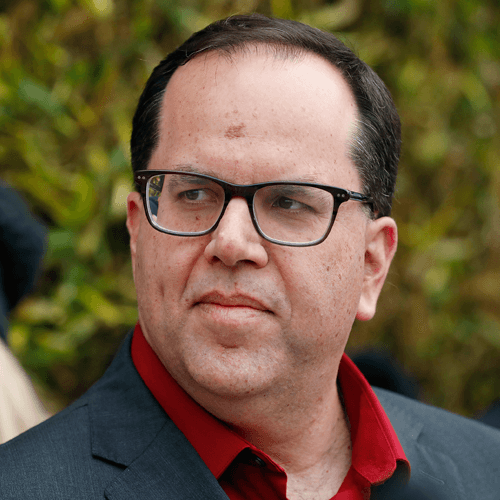 Alex Caputo-Pearl, Class of 1990
Alex Caputo-Pearl, Class of 1990